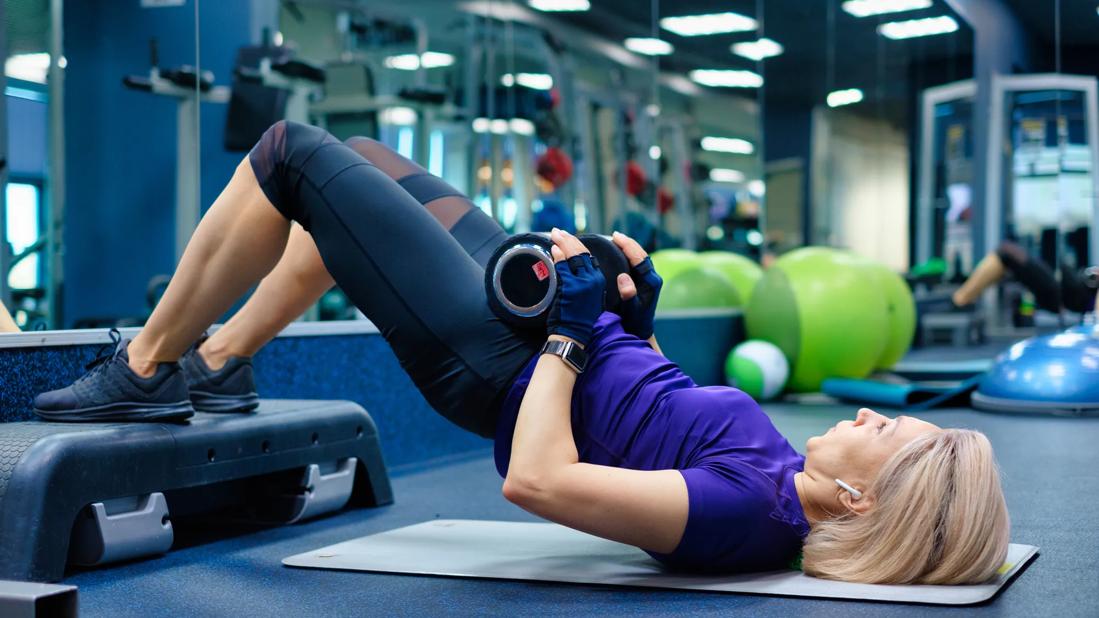How to make PT safe and effective — in-person and at home

When Ohio issued a shelter-in-place order in mid-March to slow the spread of COVID-19, physical therapy (PT) appointments for Cleveland Clinic Rehabilitation and Sports Therapy decreased by approximately 75%. Therapists at the healthcare system’s 55-plus rehab locations immediately began calling patients to touch base.
Advertisement
Cleveland Clinic is a non-profit academic medical center. Advertising on our site helps support our mission. We do not endorse non-Cleveland Clinic products or services. Policy
“The biggest question we heard has been, ‘Are you open?’” says Mary Stilphen, PT, DPT, Senior Director of Rehabilitation and Sports Therapy. “One of our main messages to patients is that we are open for business, we have safe environments and people can come to see us.”
Not all patients are comfortable with in-person PT during the pandemic, so Cleveland Clinic also offers virtual visits for PT. “Most of our initial evaluations are in-person, unless the patient is very uncomfortable with that,” says Stilphen. “After the evaluation, we make a joint decision with the patient: Is their condition appropriate to treat virtually, or is it more effective for them to come into the clinic?”
Questions like this are common among therapists and patients across the U.S. — and often searched online — as people grapple with how to continue PT. Below are five frequently asked questions, along with how Cleveland Clinic therapists are responding to them.
“People who are in pain, who are recovering from surgery or who have a functional deficit need to move to live,” says Stilphen. “PT is really important.”
It also provides much-needed socialization for some patients, such as the elderly. “A number of geriatric patients have insisted on coming in throughout the pandemic,” says Christine Schulte, PT, MBA, Outpatient Director of Rehabilitation and Sports Therapy at Cleveland Clinic. “We are able to interact with people who are otherwise shut in at home. It’s been comforting for both patients and staff.”
Advertisement
Therapists at Cleveland Clinic reassure patients that PT treatments are quite safe. “In every clinic, we have maintained social distancing, starting from when patients check in to our waiting rooms,” says Stilphen. “We have reconfigured all our treatment spaces to ensure there is at least six feet between people, understanding that therapists touch patients.” All therapists and patients have their temperature checked prior to entry and wear masks. In addition, equipment and surfaces are cleaned between patients, and hand sanitizer is placed next to every piece of equipment.
“Staff keep a constant eye on the movement of patients in the clinic,” says Schulte. “It’s well choreographed. As people move to use one piece of equipment, a therapist who has another patient leads them to a different area.”
“For patients who don’t necessarily need hands-on PT — where you can watch their movements and change them on the fly — virtual PT can be beneficial,” says Stilphen. For instance, patients recovering from hip or knee replacement surgery are good candidates for virtual PT, as are many patients with chronic pain.
However, patients who need assistance to move, who are at risk for falls, who have a movement disorder or who have a neurological injury with a functional deficit should continue in-person PT, if possible. For some patients, Cleveland Clinic has adopted a hybrid model. “They come in, are challenged and advance in their therapy,” says Schulte. “In the interim, we touch base virtually, make suggestions for increasing weight or exercise repetition, and provide education.”
Advertisement
Many patients don’t own weights or exercise equipment, and both brick-and-mortar and online stores quickly sold out of fitness products. “Our therapists have gotten creative helping patients exercise at home using everyday items and furniture,” says Schulte. For example, they have suggested that patients use cans of vegetables in place of free weights or count pennies to practice fine motor skills.
Walking outside has replaced walking on a treadmill in a clinic. However, therapists encourage patients to walk four houses down the block and back again several times rather than 20 houses down and back. “We don’t want patients to go too far from home and then not be able to safely get back,” explains Schulte.
“We can give patients an effective exercise program to follow at home, but it won’t ever replace what we do at the clinic,” says Stilphen. “Not totally.” At the same time, she adds, virtual visits do offer some upsides, such as giving therapists an inside look at patients’ homes. “We can better see how patients function in day-to-day life and spot hazards for people with mobility issues, such as throw rugs or clutter.”
At its apex, virtual PT appointments accounted for about 25% of Cleveland Clinic’s total PT volume. By June, that figure had dropped to 5%. Despite the decline, Stilphen and Schulte believe virtual PT can continue to play a role in the future. And they are glad they can offer a combination of in-person and virtual visits during the coronavirus pandemic.
“We are proud of how much we’ve accomplished in the past three-and-a-half months to benefit our teams, our patients and society,” says Stilphen. “We have been able to keep people moving.”
Advertisement
Advertisement

Patients report improved sense of smell and taste

Clinicians who are accustomed to uncertainty can do well by patients

Unique skin changes can occur after infection or vaccine

Cleveland Clinic analysis suggests that obtaining care for the virus might reveal a previously undiagnosed condition

As the pandemic evolves, rheumatologists must continue to be mindful of most vulnerable patients

Early results suggest positive outcomes from COVID-19 PrEP treatment

Could the virus have caused the condition or triggered previously undiagnosed disease?

Five categories of cutaneous abnormalities are associated with COVID-19